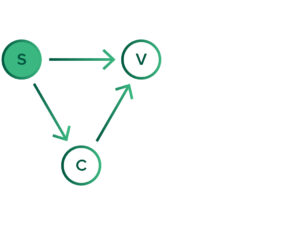1. Transformer Networks

What are they?
Giant pretrained, customizable, hyperaccurate, multitasking deep learning models
What are they used for?
Any hard problem with a significant time or context dimension (understanding and generating text, software code, etc.)
Who is using them?
Hyperscalers (Amazon Web Services, Google, IBM, and Microsoft), the advanced guard of speech and text analytics vendors, and many startups
2. Synthetic Data

What is it?
Generative models and simulated virtual environments used to create or augment existing training data
What is it used for?
Accelerating the development of new AI solutions, improving the accuracy and robustness of existing AI models, and protecting sensitive data
Who is using it?
Autonomous vehicles, financial services, insurance and pharmaceutical firms, and every computer vision vendor
3. Reinforcement Learning

What is it?
Machine learning approaches that test their way to optimal actions via simulated environments or a large number of microexperiments
What is it used for?
Constructing models that optimize many objectives/constraints or choosing actions based on positive and negative environmental feedback
Who is using it?
Firms targeting particular B2C marketing tasks, optimizing repeatable manufacturing processes, and robotic learning
4. Federated Learning

What is it?
A managed process for combining models trained separately on separate data sets
What is it used for?
Sharing intelligence between devices, systems, or firms to overcome privacy, bandwidth, or computational limits
Who is using it?
Hyperscalers, AI-enabled application vendors, and consumer electronics companies
5. Causal Inference

What is it?
Approaches such as structured equation modeling and causal Bayesian networks that help determine cause-and-effect relationships in data
What is it used for?
Business insights (e.g., attribution analysis) and bias prevention where insights and explainability are as important as prediction accuracy
Who is using it?
Innovation teams at leading organizations (e.g., determining treatment efficacy for a given disease at healthcare providers)
Avoid Zombie AI Projects With Our Best Practices
Download our AI myths and best practices guide. Learn how to avoid missteps, prioritize value, and move AI projects out of limbo with quick wins.